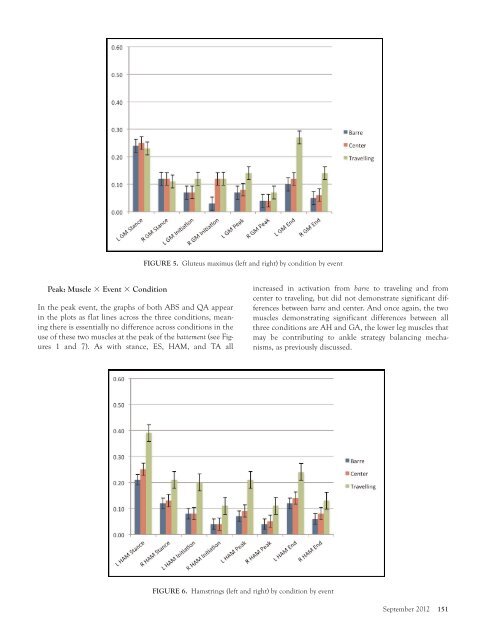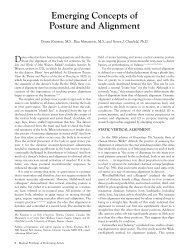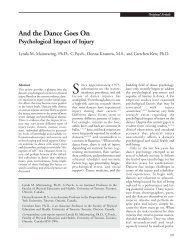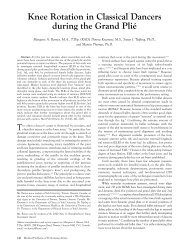Electromyographic Comparison of Grand Battement Devant at the ...
Electromyographic Comparison of Grand Battement Devant at the ...
Electromyographic Comparison of Grand Battement Devant at the ...
Create successful ePaper yourself
Turn your PDF publications into a flip-book with our unique Google optimized e-Paper software.
Peak: Muscle � Event � Condition<br />
In <strong>the</strong> peak event, <strong>the</strong> graphs <strong>of</strong> both ABS and QA appear<br />
in <strong>the</strong> plots as fl<strong>at</strong> lines across <strong>the</strong> three conditions, meaning<br />
<strong>the</strong>re is essentially no difference across conditions in <strong>the</strong><br />
use <strong>of</strong> <strong>the</strong>se two muscles <strong>at</strong> <strong>the</strong> peak <strong>of</strong> <strong>the</strong> b<strong>at</strong>tement (see Figures<br />
1 and 7). As with stance, ES, HAM, and TA all<br />
FIGURE 5. Gluteus maximus (left and right) by condition by event<br />
FIGURE 6. Hamstrings (left and right) by condition by event<br />
increased in activ<strong>at</strong>ion from barre to traveling and from<br />
center to traveling, but did not demonstr<strong>at</strong>e significant differences<br />
between barre and center. And once again, <strong>the</strong> two<br />
muscles demonstr<strong>at</strong>ing significant differences between all<br />
three conditions are AH and GA, <strong>the</strong> lower leg muscles th<strong>at</strong><br />
may be contributing to ankle str<strong>at</strong>egy balancing mechanisms,<br />
as previously discussed.<br />
September 2012 151





